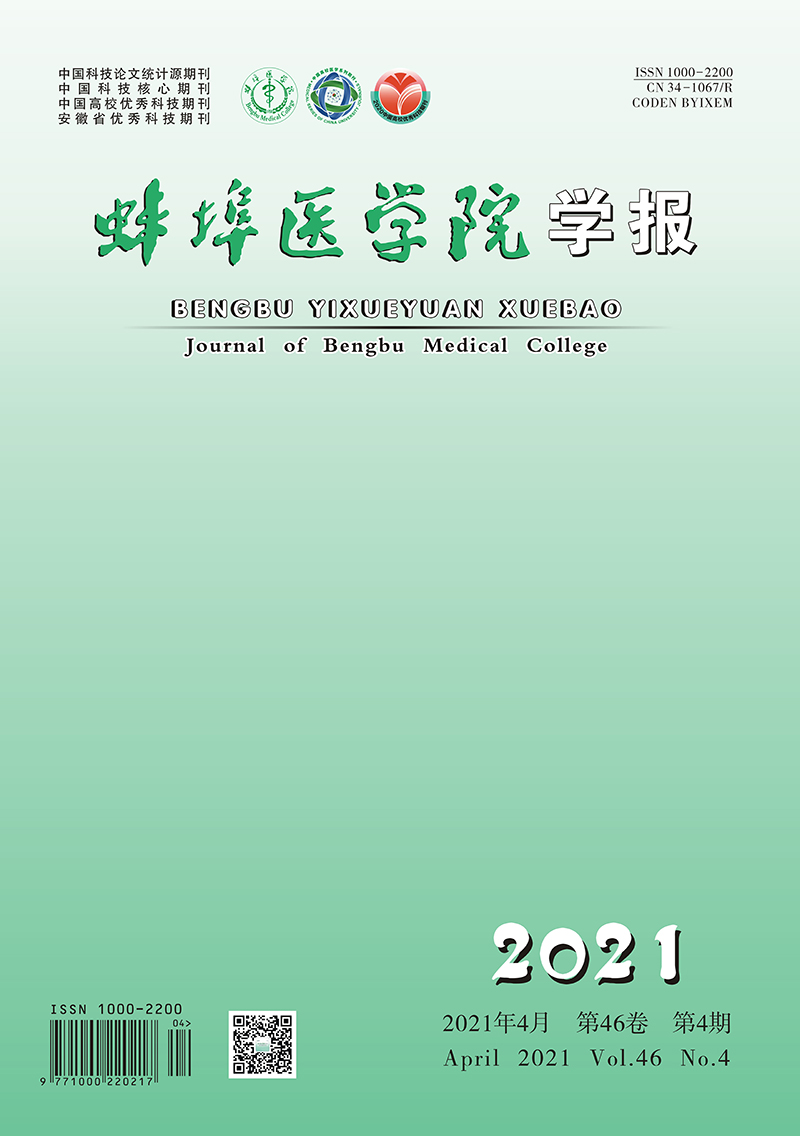-
新生儿特异性和非特异性免疫功能均极为低下,其机体的各系统器官未发育成熟,更容易遭受病原微生物的入侵,已成为医院感染的高发群体[1-3];一旦发生医院感染,影响患儿健康,加重患儿家庭负担。为了有效预防新生儿医院感染,本研究对我院新生儿科2020年1-6月1 858例新生儿的临床资料进行了总结分析,探讨新生儿医院感染的危险因素,并提出相应的预防对策, 现作报道。
HTML
-
采用主动监测方法,对入住新生儿病房的1 858例患儿资料进行目标性监测。其中男1 104例,女754例;体质量≤1 000 g 3例,1 001~1 500 g 45例, 1 501~2 500 g 264例,>2 500 g 1 546例。医院感染病例诊断标准依照卫生部2001年颁布的《医院感染诊断标准(试行)》[4]进行诊断。
-
根据《医院感染监测规范》(WS/T312-2009)中新生儿病房医院感染监测要求, 制定新生儿科目标性监测表和新生儿病房日志表,医院感染管理科专职人员通过医院HIS系统每日查阅新生儿科电子病历,查看病程记录、医嘱单、体温单和检查结果,填写新生儿科目标性监测表,主要包括新生儿的性别、胎龄、出生体质量、分娩方式、出生APGAR评分、机械通气时间等。
-
采用χ2检验。
1.1. 一般资料
1.2. 方法
1.3. 统计学方法
-
1 858例新生儿中发生医院感染24例, 27例次,医院感染发病率为1.29%, 例次感染发病率1.45%。医院感染部位为呼吸道感染12例次,占44.44%;血液感染10例次,占37.04%;胃肠道4例次,占14.81%;口腔感染1例次,占3.70%。
-
27例次医院感染病例共检出病原菌19株,主要为鲍曼不动杆菌7株,占36.84%,大肠埃希菌4株,占21.05%,其次真菌3株,占15.79%(见表 1)。
病原菌 n 构成比/% 鲍曼不动杆菌 7 36.84 大肠埃希菌 4 21.05 真菌 3 15.79 轮状病毒 1 5.26 肺炎克雷伯菌 1 5.26 表皮葡萄球菌 1 5.26 浅黄金色单胞菌 1 5.26 恶臭假单胞菌 1 5.26 合计 19 100.00 -
1 858例患儿中,男1 104例,女754例。行气管插管129例,发生医院感染9例,感染发病率为6.98%;未插管者1 729例,发生医院感染15例,感染发病率为0.87%。不同性别新生儿医院感染发病率差异无统计学意义(P>0.05)。行气管插管患儿发生医院感染率高于无气管插管者(P<0.01),随着出生体质量增加,医院感染率降低(P<0.01)(见表 2)。
影响因素 n 医院感染 χ2 P 性别 男
女1 104
75414(1.27)
10(1.33)0.01 >0.05 气管插管 是
否129
1 7299(6.98)
15(0.87)35.14 <0.01 出生体质量/g ≤1 000 3 3(100.00) 70.94 <0.01 1 001~1 500 45 5(11.11) 1 501~2 500 264 11(4.17) >2 500 1 546 5(0.32)
2.1. 医院感染情况
2.2. 医院感染病原菌分布与构成比
2.3. 不同性别、气管插管、出生体质量与医院感染发生率的关系
-
本次调查结果显示新生儿病房医院感染发病率为1.29%, 例次感染发病率1.45%,主要发生部位是在呼吸道(44.44%),其次是血液(37.04%), 与国内相关报道[5-6]结果相近。新生儿医院感染发病率较高,与新生儿呼吸道黏膜中sIgA水平较低,呼吸中枢、呼吸器官均未完全发育成熟[7]和新生儿皮肤娇嫩,侵袭性操作有关。
从调查医院感染病原菌分布结果情况显示,病原菌主要是鲍曼不动杆菌。鲍曼不动杆菌广泛存在于机体抵抗能力低、重症、长期使用广谱抗生素患儿中。由于进行机械性通气、吸痰等侵袭性操作时,造成气道黏膜损伤,口咽部细菌通过插管进入了下呼吸道,长期使用广谱抗菌药物,杀灭了敏感菌株,耐药的鲍曼不动杆菌仍然存活在体内,因而容易引起鲍曼不动杆菌感染[8]。而新生儿是一个特殊群体,皮肤不能提供有效屏障抵御病原微生物,在实施侵入性操作时,更容易发生感染。
侵袭性操作、早产儿、低体质量儿等是医院感染的高危因素[9-10]。从本次监测结果也显示气管插管、低体质量儿不同组的医院感染率比较差异均有统计学意义(P<0.01),新生儿血浆中IgG水平低,机体免疫功能低,尤其是早产儿、极低体质量儿各系统均未发育成熟,不能适应外界环境,病原体更容易侵袭,所以容易发生医院感染[11-12]。侵袭性操作在新生儿中应用较多,如气管插管、呼吸机使用、血流置管等均会破坏新生儿正常皮肤黏膜,新生儿各脏器尚未发育成熟,在进行一些侵袭性操作时会增加医院感染风险[13]。为有效地控制新生儿医院感染发生,本研究针对上述危险因素提出积极有效的预防措施:(1)加强病房环境的清洁和消毒,保持病房的空气清新,加强患儿使用过的监护仪、蓝光箱,辐射台和暖箱等仪器设备的清洁消毒。出现多重耐药菌患儿,及时采取消毒隔离措施。(2)严格执行手卫生制度,曾有报道医务人员手是主要传染源,经过医务人员手传播细菌而造成的医院感染约占30%,病原菌检出率达80%[14],是医院感染最常见的传播方式,因此我们按规范流程洗手,提高手卫生依从性是减少医院感染最经济、最有效的方法[15]。严格落实洗手或手消毒指征,每一张患儿床旁配备速干手消毒液, 以方便医护人员使用。(3)严格遵守无菌技术操作原则,保证一次性物品一人一用一丢弃。每天用温水擦洗患儿全身,做好皮肤、脐部、口腔、眼的特殊护理,动作轻柔,避免损伤皮肤及黏膜,减少感染的风险[16]。(4)减少侵袭性操作,医务人员严格掌握新生儿侵袭性操作指征,置管时动作轻柔,避免损伤黏膜。吸痰后要加强翻身拍背,在气管插管前尽量吸出口腔的痰液,保持呼吸道的通畅,防止分泌物被吸入呼吸道,增加呼吸道感染的机会。每天评估留置导管的必要性,尽量减少置管的时间,置管期间,做好各个导管的维护,严格遵守无菌操作原则,减少感染的机会。(5)合理使用抗生素[17],根据患儿病原学和药敏结果合理用药,避免长期广谱抗生素的应用而发生二重感染和菌群失调。(6)提高新生儿的免疫力,尽早母乳喂养,增强新生儿营养,保持患儿体质量在正常范围内,加强孕期母亲的营养指导和孕产知识的宣教。
本次调查结果显示,新生儿是医院感染的高危人群,目标性监测能使医务人员动态掌握医院感染的状况,通过加强病房环境的清洁消毒,严格执行手卫生,注意无菌技术操作等,及时有效地采取预防控制措施,降低医院感染的发生。






 DownLoad:
DownLoad: